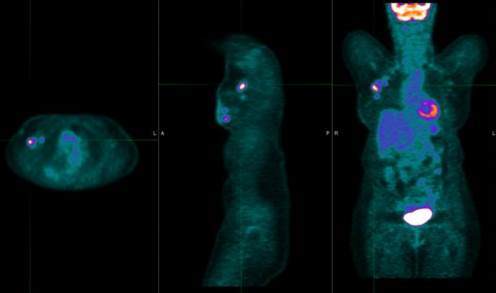Sentinel Node Biopsy
According to the Society of Nuclear Medicine and Molecular Imaging, when breast cancer spreads, cancer cells are often found in the lymph nodes that are located under the arm, called axillary sentinel lymph nodes. The lymph nodes in this armpit region drain lymph from the breast and nearby areas. To determine if cancer has spread to a patient’s lymph nodes, an axillary lymph node dissection may be performed in addition to removing part or all of the breast.
How is Sentinel Node Dissection performed?
- Sentinel node(s) dissection is a relatively new alternative to the axillary lymph node(s) dissection which was previously performed during surgery. Molecular imaging is used to identify the first few or sentinel nodes into which a tumor drains. Sentinel nodes that are closest to the tumor are most likely to contain cancer cells if the tumor has started to spread. In a sentinel node biopsy, only the sentinel nodes are surgically removed, which reduces the number of lymph nodes resected and thus reduces complications and side effects, including morbid swelling of the arm and pain as a consequence of axillary lymph nodes dissection.
- Prior to surgery to remove part of or the entire breast, a radiotracer that contains radioactive material is injected near the tumor and/or around the nipple. Images are taken to visualize the sentinel lymph nodes, which may harbor cancer cells. The surgeon makes an incision underneath the arm and passes a hand-held probe over the area to measure levels of radioactivity. The lymph nodes that have absorbed the radioactive tracer are considered as sentinel lymph nodes and are removed to be examined under the microscope for the presence of cancer cells.

What are the advantages of Sentinel Node Biopsy?
A sentinel lymph node biopsy is:
- highly reliable in detecting cancerous cells
- more accurate than the traditional axillary dissection in assessing whether breast cancer has spread to the lymph nodes
- may be performed on an outpatient basis
- easier for the patient in terms of recuperation with less surgical dissection.
- It spares the patient an unnecessary total axillary lymph nodes dissection with its consequences of morbid arm swelling & pain.
For more information on Sentinel Node Biopsy, visit the Society of Nuclear Medicine and Molecular Imaging website.